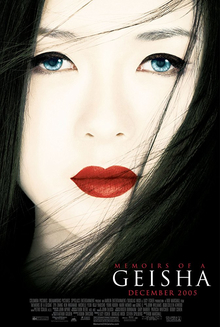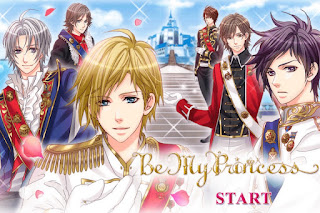Yay or Nay? Memoirs of a Geisha (Novel + Film)
Memoirs of a Geisha was a novel I got to read last summer, as part of my summer reading. Memories of reading this novel were spent at a Tim Hortons (I know, how Canadian of me), but I also remember turning to the first page of this novel. It took me for a ride from the very beginning.
The Story
The story follows a young girl, Chiyo as she’s taken from her childhood village and brought to Gion, Kyoto to serve at an okiya, a geisha’s home until the house can decide if she’s good enough to serve as a geisha and work with their clientele. That is, a clientele that will pay for her to entertain them in lavish houses of finery, with music and dance. Chiyo then is transformed into Sayuri, one of the most sought-after and best geisha of her time, all of her life’s work done for one man.
My Thoughts
“At the temple, there is a poem called "Loss" carved into the stone. It has three words, but the poet has scratched them out. You cannot read loss, only feel it.”
I think that Golden’s take on the geisha in an accurate, historical-fiction setting is amazing. After all, finding Japanese-setting literature that is both fictional, albeit historical is hard to find. Although Golden is not, in fact, Japanese, most of his story surrounding the geisha world (with some research that I did) is accurate. Not all, of course, but most of it. It brings to light a way of living that seemed to be the pinnacle of tradition with that of the setting of the growing industrial age and the Second World War.
Though the eyes of Sayuri, it is almost poetic. Everything in her life seems beyond her control, and she goes with it (even if she doesn’t want to sometimes). I’m paraphrasing quite a bit, however, the romance aspect of the story ties in greatly to that of the reason why she lets herself become the geisha she does. It almost becomes a political game to get to the top. One of the things that really makes this book good is the utter beauty that is Golden’s use of language. He manages to tell the story in a descriptive, intriguing way but maintaining a voice of the past with it. Take a look here, at two of my favourite quotes:
“My mother once told me I was like water. Water can carve its way even through stone. And when trapped, water makes a new path.”
This idea of Sayuri being like water is one that carries throughout the novel. I won’t say she “goes with the flow”, although how punny would that be? No, rather, she finds her own unique path in the world of severe competition and a rapidly changing society.
She paints her face to hide her face. Her eyes are deep water. It is not for Geisha to want. It is not for geisha to feel. Geisha is an artist of the floating world. She dances, she sings. She entertains you, whatever you want. The rest is shadows, the rest is secret.
So what I will say is that Golden maintains that aspect of beauty within his writing while also giving an aspect of beauty, simultaneously, through how the geisha’s life is described, as through how Sayuri describes it. Of course, this is a two-sided coin. Much of Sayuri’s upbringing is a sad one, and that’s where the “romance” comes in.
Sayuri is in love with a man she knows as the “Chairman” and when she meets him as a child, she decides to devote her life to one day meeting him again. He’s the one character who shows mercy on her when nobody else does. Thus, Sayuri strives to meet him again.
“He was like a song I'd heard once in fragments but had been singing in my mind ever since.”
Yeah, I mean when the romance comes in, this is where I started to question whether this was true to the life of a geisha. Granted, Sayuri never wanted to be one in the beginning, but I think it fudges the line between “what people think about when they hear geisha”, and what they actually are. Yeah, it’s fiction and not ALL of it is supposed to be accurate, but still. That doesn’t mean it wasn’t enjoyable to read, but it was something I kept in the back of my mind. That and throughout the story, to get to him, it’s something that hurts a lot of people along the way.
Regardless, the gritty details of a geisha’s life aren’t ignored. Given that the character herself never wanted the life, the romance aspect gives her a way to break from it. From this, it sets her free. There are enough plot twists in the story that it kept me really invested. I think for Sayuri, there’s a lot of development between her relationship with the “Chairman”, and her thoughts on the geisha’s life from the beginning. As the reader, you’re taken on her journey to being a geisha, learning along the way the commitment it takes.
From the film’s perspective, it’s almost identical to the novel. My favourite scene is Sayuri’s debut when she dances the “winter dance”
There is so much grace and elegance in this story, and enough factuality to introduce you to the world of geisha during and before World War 2. It also, both film and novel, allow to a glimpse into the beautiful scenery of Japan, as well as a little bit of their history and culture (of course with some fictitious element added).
My Rating
For our first week of a Japanese-themed August, I think we started out with a banger! This is a really good novel, and taking a quick look at both its film adaptation and the novel again reminded me how much I loved this. It’s a good summer read if you’re looking not for something light, but something still to suck you in for a month or two. It might also inspire you to learn a little more about Japan in general. I think the story is lovely, and it’s mirrored in the writing. There are complex issues, and a good plot, coupled with a romance.
Overall I’d rate this novel: ⭐⭐⭐⭐
Definitely give it a read if you haven’t already! Or, if you’d prefer, watch the film!










I loved all the GIFs you used.
ReplyDeletethanks :D
Delete